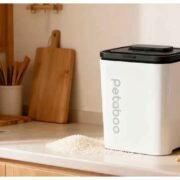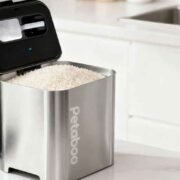Can you imagine your business today without a tangible or reliable point of sale to track and manage the finances? Traders and shopkeepers living well before the 1800s had no certain means to manage their sales, making theft a rampant business.
Today, we have numerous solutions for a single POS suited to various business needs, from restaurants, bakeries, boutiques, industrial corporations to small retail businesses.
Let’s take a trip down history lane to know just how things planned out to give us the best POS systems we have today.
Starting from America
The American Civil War left quite an impact with its withdrawal and it wasn’t until the late 1880’s that businesses began booming. Managing consumer demand became hectic with business owners employing almost anyone with and without experience.
It was downright easy to pocket the earnings and run away without fear of being caught and this way of living continued for a long while.
Inspiration from a steamship journey
James Ritty, the owner of a saloon from Dayton, Ohio, also found the theft situation frustrating. It was when he embarked on a steamship for business matters that he came across a mechanism capable of counting the number of turns of the propeller.
It became the first tangible idea to be incorporated into a mechanical device to register payments. In 1879, brothers James and John Ritty, applied for their patent, the “Ritty’s Incorruptible Cashier” that consisted of two features.
- A big dial display showing the payment made by customers
- An internal compartment that recorded total capital
Then came the founding of a small factory to mass produce these devices which ended with a single sale and its eventual decline.
Developments in the mechanical cash register journey
At the time, the public wasn’t aware of the mechanical device. Further, it didn’t have a cash drawer to hold the money nor the receipt printer to declare the sales.
James Ritty found it burdening to handle two businesses at once and much preferred the saloon, so he decided to sell his factory.
Jacob H. Eckhert became the new owner of the cash register factory in 1881 and proceeded to rename it as the National Manufacturing Company. His additions to the device were a cash drawer and a distinct sounding bell to ring in the sales.
The cash registers still failed to draw attention even after a couple of years, making their sales scarce. In 1884, Jacob sold the company to John H. Patterson who subsequently renamed the firm to National Cash Register Company, still standing strong as the NCR Corporation today.
Settling in with electronic developments
Patterson invested his efforts into creating a dedicated cash registry with the addition of a paper roll that printed every transaction. He set up an aggressive sales department to handle the marketing and eventually popularized the mechanical point of sale in shops.
It was only in 1906 that inventor Charles F. Kettering, at NCR, introduced an electric motor to operate the POS. The early 20th century saw little in further innovations until POS became completely electronic in the 1970s.
The first big commercial use of POS systems began with IBM in 1973, with machines able to control up to 128 tills with limited features. McDonald’s received the first POS with microprocessors and Gene Moshner developed a POS for a touchscreen interface. With the advent of the internet, the first POS system for MS Windows was developed.
The shift to cloud-based systems
The early electronic point of sales (EPOS) required the owner to install and maintain the software and the hardware. With the introduction of Cloud-based services, EPOS is now a SaaS where users avail of the service and pay a monthly or annual fee.
Till 2002, POS systems for small businesses were mostly PC touchscreen-based. Once tablets and Smartphones became mainstream, app-based readers were introduced to accommodate cash and card payments on the go.
With technological advancements, POS systems became more affordable and compatible, and less intimidating with an easy-to-use interface and managerial features.
Final thoughts
Today, POS systems serve not merely as advanced cash registers, but also as a platform to manage customer service, marketing, inventory tracking, and so much more. Processing payments in these competitive times is made effortless with the professional services of Merchant Services Broker Solutions.
Whether you require setting up online gateways, enable mobile or online payments, browse through POS systems suited for your business, or avail software integration and accounting services, MSBS is simply a call away. Reach out to the experts at 888-912-6727 to get started today.












